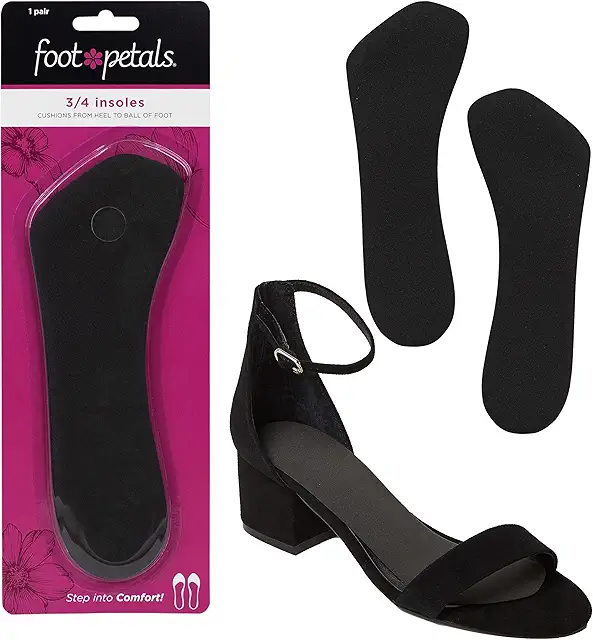How to Use High Heel Insoles

Wearing high heels can be a challenge, especially if they cause discomfort. High heel insoles are designed to provide extra comfort and support while reducing the pain that comes from wearing heels. In this guide, we will explain how to use high heel insoles properly, ensuring you get the most out of your shoes without sacrificing comfort. By following these simple steps and tips, you’ll be able to walk confidently and comfortably in your favorite high heels, no matter the occasion.
Choosing the Right Insoles for Your Heels
Understanding Different Types
High heel insoles come in various types, such as gel, foam, and orthotic insoles. Choose one based on your specific needs like cushioning or arch support.
Finding the Right Size
Ensure the insoles fit your shoes properly. Most insoles come in standard sizes, but some may require trimming to fit your high heels.
Consider the Heel Height
Higher heels need more cushioning and support, so choose insoles that provide extra comfort for taller shoes.
Preparing Your Shoes for Insoles

Clean the Inside of Your Shoes
Before placing the insoles, clean the inside of your shoes. This helps the insoles stick properly and stay in place.
Remove Any Old Insoles
If your high heels have existing insoles, remove them to make space for the new ones.
Dry the Shoes Completely
Ensure your shoes are completely dry before inserting the insoles to avoid slipping or discomfort.
Inserting the Insoles
Align the Insoles with Your Shoe Shape
Place the insole inside the shoe, ensuring that it aligns properly with the heel and toe area for full support.
Press Firmly
Press down on the insole, especially at the edges, so it stays in place during use.
Check for Comfort
After inserting the insoles, put on the shoes to check if they feel comfortable and secure.
Using Gel Insoles
Perfect for Extra Cushioning
Gel insoles are ideal for reducing pressure on the balls of your feet when wearing high heels.
Positioning Gel Insoles
Place them at the ball of the foot, ensuring the thicker part is where most pressure occurs.
Replace Often
Gel insoles tend to wear out faster, so replace them regularly for continued comfort.
Using Foam Insoles
Ideal for Extra Support
Foam insoles provide better arch support and cushioning for the entire foot, making them suitable for extended wear.
Cut to Size
Foam insoles may need trimming to fit perfectly into your shoes. Follow the guide marks on the insole.
Long-Lasting Comfort
Foam insoles tend to last longer, offering extended comfort for everyday high heel wear.
Using Orthotic Insoles

Designed for Foot Health
Orthotic insoles are great for high heels if you have specific foot issues like flat feet or high arches.
Inserting Orthotic Insoles
Follow the manufacturer’s guide for placing orthotic insoles correctly, ensuring your foot aligns with the arch support.
Choosing Custom Insoles
Consider getting custom orthotic insoles if you wear high heels frequently and need extra support.
Securing Insoles in Place
Using Adhesive Insoles
Some insoles come with adhesive backing to help them stick better inside your shoes. Peel the backing and press them firmly.
Non-Adhesive Insoles
If your insoles are not adhesive, check regularly to make sure they haven’t shifted.
Replace When Needed
Insoles wear out over time. Replace them when they lose their shape or cushioning.
Maintaining Your Insoles
Cleaning Gel Insoles
Wash gel insoles with mild soap and water to keep them clean and sticky.
Cleaning Foam and Orthotic Insoles
Foam and orthotic insoles can be wiped down with a damp cloth. Avoid soaking them in water.
Storage
Keep your insoles in a dry, clean place when not in use to prolong their lifespan.
Benefits of Using High Heel Insoles

Improved Comfort
High heel insoles reduce pain in the balls of the feet, arches, and heels, making long wear more comfortable.
Reduced Pressure
Insoles help distribute pressure evenly across your foot, preventing sore spots.
Enhanced Stability
Insoles improve balance and stability, reducing the chance of slipping or discomfort.
When to Replace High Heel Insoles
Signs of Wear and Tear
Replace insoles when they become flat, lose their shape, or stop providing the same level of comfort.
Regular Replacements for Active Users
If you wear high heels regularly, replace your insoles every 3 to 6 months.
Check for Support
If your feet feel tired or sore, it may be time to invest in a new pair of high heel insoles.
Conclusion
Using high heel insoles is an effective way to enhance comfort and prevent foot pain while wearing heels. By choosing the right type, preparing your shoes, and inserting the insoles correctly, you can enjoy long-lasting comfort and stability. Regular maintenance and replacement of your insoles will ensure you get the most out of them. With these tips, you’ll be able to confidently wear high heels without the usual discomfort.
FAQs
- Can I use insoles in any type of high heels?
Yes, most high heel insoles are designed to fit various types of heels. - How often should I replace my high heel insoles?
It depends on how often you wear them, but every 3 to 6 months is recommended. - Can I wash my high heel insoles?
Gel insoles can be washed with mild soap and water. Foam and orthotic insoles should be wiped down. - Do insoles work for flat feet?
Yes, orthotic insoles provide extra support for flat feet when wearing high heels. - Do insoles make high heels more comfortable?
Absolutely, they provide cushioning and reduce pressure on key areas of the foot, making heels more comfortable.
